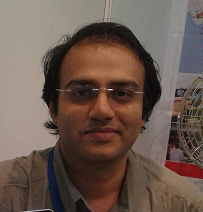Note: These definitions are taken from some of the IEEE conference review guidelines
Courtesy of: Mr. Arun Aggarwal.
- Originality: Not known or experienced before. A technique or a method not used before. Has this or similar work been previously reported? Are the problems and/or approaches in the paper completely new?
- Novelty: According to this criterion, it is not necessary for the paper to develop new techniques, or to generate new knowledge, but it should, at least, apply, or combine, them in a fresh and novel way or shed some new light on their applicability in a specific domain.
- Innovation: A new product, process, or service based on new or known technologies, methods, or methodologies. Known technologies and techniques might be combined to generate new product or service with potential users in the market. What defines innovation is a new kind of possible users of a product or a service, not necessarily new knowledge, new techniques, new technologies, new methods, or new applications. Innovation is related to new uses or new markets.
- Relevance: Importance, usefulness, and/or applicability of the ideas, methods, and/or techniques described in the paper.
- Appropriateness: Suitability, agreeableness, compatibility, congruity, and adequacy of the paper to the areas and topics of the journal or the conference. Would the article perhaps better be presented at another conference?
- Significance: Importance and noteworthiness of the ideas, methods, and techniques used and/or described in the article. The problem approached in the article should be interesting and natural, and not just be chosen by the authors because their methods can attack it. What has been presented in the article should not only be obvious and trivial ideas.
- Quality: Scientific, technical, and/or methodological soundness of the article. The correctness of results, proofs, and/or reflections. Inclusion in the articles of details that allow checking the accuracy of the results or citations of articles where can be found the proof or parts of it.
- Presentation: Adequate organization of the article and the language used in it, as to make it’s content clear, easily readable, and understandable — the clarity in what has been achieved by the author of the article. Even technical papers on a narrow topic should be written such that non-experts can comprehend the main contribution of the paper and the methods employed. The paper shouldn’t just be a litany of deep but obscure theorems. The information of the paper should be available to the reader with a minimum of effort.
